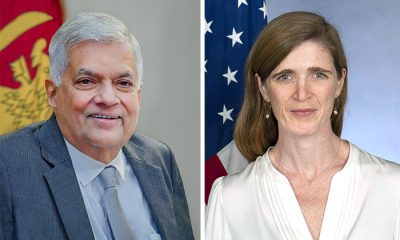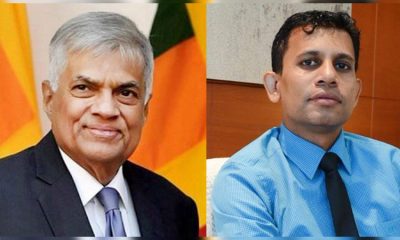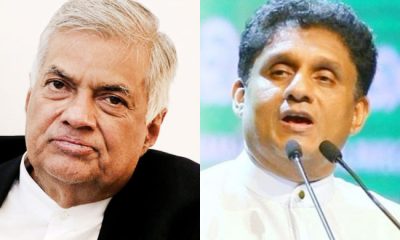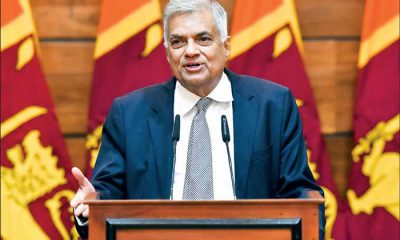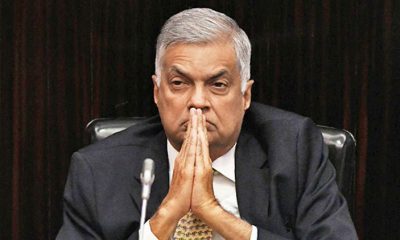Features
Full implementation of 13A– Final solution to ‘national problem’ or end of unitary state? – Part VII
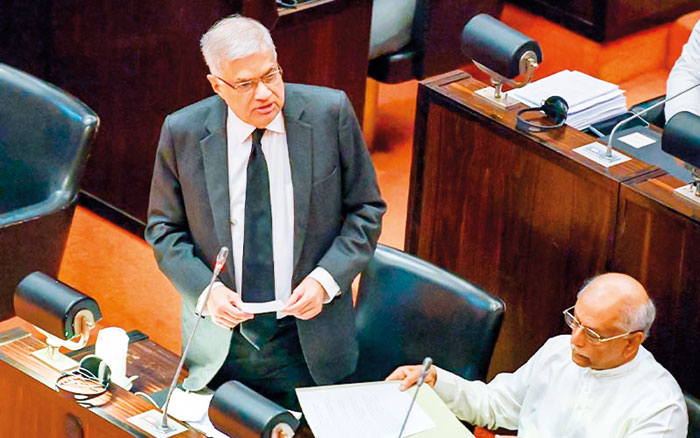
by Kalyananda Tiranagama
Executive Director
Lawyers for Human Rights and Development
(Continued from yesterday (03 Oct.)
President Wickremesinghe’s solution
From the statements made by President Ranil Wickremesinghe before Parliament and at public fora at different times it appears that he believes that the most urgent task before him is providing a solution to the ethnic Issue acceptable to the Tamil political parties in the North-East. Soon after assuming duties as the Prime Minister in Gotabaya Rajapaksa government in May 2022, he declared in Parliament that he would take steps to address the grievances of the People in the North and the East for meaningful devolution of power through Constitutional amendments with the consensus of other political parties. Addressing the Convocation of Kotelawala National Defence College in September 2022, he declared that he would provide a final solution to the Tamil People’s problem within the next few months and that he had already commenced discussions with Tamil MPs. In his discussions in London with the leaders of the Tamil Diaspora Groups he had told them that he would provide a solution to the Tamil People’s problem acceptable to them and sought their support for economic development in Sri Lanka. Winding up the Budget Debate in Parliament on November 22, 2022, President Wickremesinghe said that he believed that he would be able to provide a solution to the Tamil national problem satisfactory to the Tamil People, with the support of all the political parties, before the 31st of December 2022 and that it was his wish to celebrate the 75th Anniversary of National Independence on February 4, 2023 with the participation of people belonging to all nationalities in a country free from ethnic problems.
On August 9, 2023, addressing the All Party Conference in Parliament, President Wickremesinghe said that the 13th Amendment is part of the Constitution, they all are bound to give effect to all the provisions in the Constitution, and that he is ready to fully implement the 13th Amendment, granting all powers, except Police powers, to the Provincial Councils.
However, when we carefully go through his speech, we can see that he is not only standing for the implementation of the 13th Amendment fully, but is taking steps to grant powers going far beyond the 13th Amendment, and in the guise of addressing issues faced by the Provincial Councils in the implementation of their powers, is planning to enact new laws for implementation of several key proposals in the Reports of the Steering Committee and the Sub-committee on Centre – Periphery Relations of the 2016 Constitutional Assembly.
Let us examine President Wickremesinghe’s Address to All Party Conference on August 9, 2023:
‘‘The devolution of power within provincial councils is governed by the 13th Constitutional Amendment, which holds the status of the highest law of our nation. We cannot afford to disregard it. Both the executive and the legislature are obligated to execute its provisions…
‘‘Numerous issues surround the implementation of the 13th Amendment, as well as the functioning of provincial councils. … If our nation is to progress, these issues must be addressed. The 13th Amendment needs to be implemented in a manner that aligns with our country’s development and future. This can only be achieved if all parliament members come to a consensus after a thorough and open-minded discussion.
‘‘The division of power and authority between provincial councils, central government and local governing bodies lacks clarity. Consequently, subjects overlap between provincial councils and the central government, resulting in duplication of efforts and delayed actions. Instead of resolving people’s issues, problems are escalating due to these inefficiencies.
‘‘Today, I present my proposals and forthcoming actions concerning the 13th Amendment and devolution of powers to this House.
‘‘In recent years, numerous Committees associated with the Parliament have produced several documents that thoroughly examine the subject of provincial councils and their prospective trajectory. Among these documents is the interim report released on September 21, 2017 by the Steering Committee of the Constitutional Council of SL under my leadership. Importantly, all parties represented in Parliament endorsed the recommendations outlined in this interim report.
· This statement is far from the truth. Many parties represented in Parliament had their reservations on the recommendations in the Interim Report.
‘‘The Interim Report offers recommendations concerning amendments to Articles 3, 4 and 5 of the Constitution. We now bring forward these proposed constitutional amendments for consideration by the Parliament….
· Here the President speaks of recommendations in the Interim Report for amendment of Articles 3, 4 and 5 of the Constitution. Articles 3 and 5 being entrenched clauses, they cannot be amended without the approval of the people at a Referendum. Article 4, not being an entrenched clause, can be amended by two thirds majority in Parliament, without a Referendum.
· Article 4, though it is not entrenched, is a most important and vital Article in the Constitution describing in detail how the sovereignty of the people, powers of government are exercised by different organs of government – the Legislature, the Executive and the Judiciary – and enjoyed by the people.
· In many Judgements our Supreme Court has held that Articles 3 and 4 must be read and considered together in determining the constitutionality of Bills of Parliament.
· The formulation of Article 4 proposed in the Interim Report is as follows: ‘The legislative, executive and judicial power of the people shall be exercised as provided for by the Constitution.’
· At a glance this formulation appears to be innocuous. This is a crafty formulation drafted by cunning politicians enabling them to achieve their sinister motives detrimental to the people and the country to enact laws without touching Article 3.
· There is nothing in this proposed formulation of Article 4 that needs to be considered together with Article 3 in the Constitution and all the said Supreme Court Judgements will become irrelevant and the Govt would be able to pass Bills which it could not hitherto pass without being declared inconsistent with the Constitution.
The President is planning to give effect to the recommendations in the report of the Sub-committee on Centre – Periphery Relations. The following are among the main Recommendations in the Report of the Sub-committee on Centre – Periphery Relations:
(1) This Report recommends to do away with Item 1 in the Reserved List of the present Constitution ‘National Policy on all Subjects and Functions’ and make provision to ensure a consultative mechanism, involving the participation of the provincial representatives in the formulation of national policy.’
The President says: ‘‘In formulating National Policy on matters contained in the Provincial List the Central Government shall adopt a participatory process with the Provincial Council. No transfer of decentralized powers to the Central Government through the creation of national policies related to the topics within the Provincial List nor any impact on the executive and administrative powers under the jurisdiction of the Provincial Council. The executive and administrative powers required to enact the decentralised subject will remain under the jurisdiction of the Provincial Councils. The Province will retain the executive and administrative powers (implementation powers) with regard to the said power.’’
The President had stated that he would present the above proposals to Parliament as Constitutional amendments so the House could take it forward for necessary action.
· When this is done, the Provincial Council will get all the powers- legislative, executive and administrative – in respect of the devolved subject. He has craftily used the phrase – to enact the decentralised subject – instead of openly saying powers to enact legislation on the devolved subject, to cover up the real intention and the effect. Now the subject is fully devolved, the Provincial Council can pass any statute required for its implementation. The Parliament has no power to pass any legislation on the subject as it is no longer a subject in the National List.
· The Governor’s power to withhold statutes for consideration by the President also automatically disappears as there is no need for that.
In his speech the President states: ‘‘Furthermore, attention should be directed towards the report of the committee established to examine the relationship between the Parliament and the Provincial Councils, as well as the report from the Sub-committee on Centre – Periphery Relations.
‘‘Through these documents, the provincial council system is affirmed as an institutional framework that cannot be excluded from our governance system. Even parties like the JVP and JHU, which do not view provincial councils as a solution to ethnic conflicts as units of decentralization have acknowledged the need for specific amendments within the provincial council system and its unchanged aspects.
‘‘This reinforces the notion that the provincial council has become an enduring component that cannot be excised from Sri Lanka’s governmental structure or political landscape. ‘‘It is important to note that provincial councils were established not exclusively in the Northern and Eastern Provinces but across all nine provinces.’’
However, other than saying that the Provincial Councils were established and governed under the 13th Amendment to the Constitution and that they have become an enduring component that cannot be excised from Sri Lanka’s governmental structure, in his speech, the President has not given any reason as to why they should be continued or any example as to what benefit the people have received from the Provincial Councils. Nor has he pointed out how they would bring about national unity and national reconciliation through the proposed amendments.
In his own words, Provincial Councils have resulted in a colossal wastage of public funds that could have been used for the benefit of the people. This is what the President says:
‘‘Our annual expenditure on provincial councils amounts around Rs. 550 billion. Have these councils justified this investment? Has this substantial funding truly benefited the populace? This is an aspect that deserves attention. We spend Rs. 22,000 for each person every year. We are spending Rs. 22,000 that could be spent on our students for provincial councils. That is Rs. 88,000 that can be spent on a family of four. Are we getting benefits from it?’’
Provincial Councils are functioning without elected representatives and Board of Ministers since 2017. In the 9 Provincial Councils there are 9 Chief Ministers, 36 PC Ministers and 408 PC Members. The Chief Minister is entitled to the salary, perks and other benefits of a Cabinet Minister, a PC Minister entitled to the salary, perks and other benefits of a State Minister and a PC Member is entitled to half the salary, perks and other benefits of a Member of Parliament. Most probably, the above amount of Rs. 500 billion may have been calculated without calculating this expenditure. This would almost amount to the same cost required for the maintenance of the Diyawannawa lot. If this cost is also added to Rs. 500 billion one can imagine the amount of loss caused to the country.
(To be continued)
Features
Virulence of identity politics underscored by rising India-Pakistan tensions
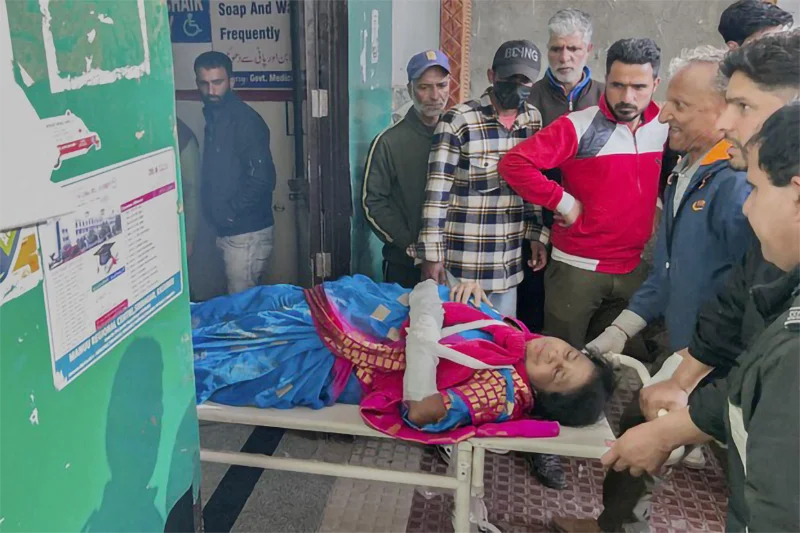
 In the wake of the ‘leave India’ order issued to all Pakistani nationals in India by the Indian centre, the authorities in India’s Madhya Pradesh are reportedly up against a troubling dilemma with regard to what they must do with the offspring of Pakistani fathers and Indian mothers. In other words, of what nationality are they: Indian or Pakistani?
In the wake of the ‘leave India’ order issued to all Pakistani nationals in India by the Indian centre, the authorities in India’s Madhya Pradesh are reportedly up against a troubling dilemma with regard to what they must do with the offspring of Pakistani fathers and Indian mothers. In other words, of what nationality are they: Indian or Pakistani?
Such challenges could be confronting quite a few states in India in view of the likely widespread presence of mixed origin children in the country but the tangle helps to also highlight the harmful impact identity politics are continuing to wield on India, South Asia’s most successful democracy. Given its official democratic and secular identity, India would need to steer a policy course on this question that would indicate a rising above narrow nationalistic politics by the centre.
It is in fact a testing time for India. Given its democratic credentials the observer would expect the Indian centre to take a broad, humane view of the matter and allow the children to stay on in India, since the situation is not of the children’s making. If eviction orders are issued on the children as well narrow identity politics could be said to have won in India. However, this is entirely a matter for the central government and would be resolved by it in keeping with what it sees as its national interest currently. Hopefully, India’s enlightened national interest would be heeded.
Such policy dilemmas over a person’s true national identity, decades into India’s ‘political independence’, point to the persistence of challenges central to nation-making in the country. But such challenges are continuing to be faced by the entirety of South Asia as well.
All over the region, divisive identity politics are continuing to challenge the credentials of those states that are claiming to be democratic. Would they say ‘no’ emphatically to those political forces that are championing narrow ethnic, religious and language identities, for example, and steer a policy course that would be faithful to secularism and equity in all its dimensions?
This is the question and it could be of course posed to Sri Lanka as well, whose current government is claiming to work towards the establishment of a polity that is free of ethnic and religious nationalism. Democratic opinion in Sri Lanka would like to have concrete evidence that it is genuinely committed to these ideals.
Thus is a re-visit of the founding ideals of India and other democracies of the region being prompted by the current crisis in India-Pakistan relations. The conflict ideally ought to prompt democracies to question to what degree they are truly democratic and take the necessary measures to put things right on that score.
If nation-making in the truest sense has occurred in South Asia we of the region would not be having on our hands the currently endemic and wasting identity-based conflicts and wars. Nation-making is rendered possible when equity in all its respects is practised by states. It is the surest means to national integration and unity. The majority of states of South Asia are nowhere near these goals.
The fillip it may provide identity based discord in the region could be counted as one of the relatively slow-acting but dangerously insidious effects of the present India-Pakistan confrontation. The current, dangerous war of words between the sides, for instance, would only serve to intensify the populist perception that the region is seeing a vastly invigorated Hindu India versus Islamic Pakistan polarity. However, in the immediate term, it is a hot war that ought to be guarded against.
As mentioned in this column last week, a regional initiative towards resolving the conflict would prove ideal but since SAARC is currently in a state of virtual paralysis, Commonwealth mediation emerges as the next best option to explore in working out a negotiated solution.
Unfortunately, UN mediation, although desirable in this crisis is unlikely to prove entirely effective in view of the possibility of the major powers using such intermediation to further their partisan interests. Going forward, the UN General Assembly would need to take note of these considerations and figure out as to how it could play a constructive role in peace-making and insulate itself against interference by major powers.
Comparatively, the Commonwealth of Nations could prove more balanced in its managing of the confrontation. This is on account of the formation being widely representative of the developing world and its main interests. However, well-meaning groupings and individual states that have generally insulated themselves to big power manipulations could prove effective in these peace-making efforts as well. The need is for an in-gathering of countries that place peace in South Asia above partisan, divisive interests.
Given India’s major power status and its crucial economic interests worldwide it could be justifiably surmised that the April 22nd terror attack on civilians in Indian-administered Kashmir was deliberately planned to cause the greatest harm to India. The setback India’s tourism industry may suffer, for instance, should be taken cognizance of.
Besides, the strategy was also to ignite another round of religious riots in India and outside. Given these considerations it should not come as a surprise if the Indian political leadership sees it to be in India’s interests to initiate a tough response to the attack.
However, a military response could prove extremely costly for India and the region, as pointed out in this column last week. The negative economic fallout from a new India-Pakistan war for the region and the world could be staggering. The disruptions to the supply chains of the countries of the region from such an outbreak of hostilities, for instance, could be prohibitive and bring the countries of the region to their knees.
A crucial need is for politicians in both India and Pakistan to think beyond their short term interests. Quick military action could yield some perceived short term gains for these politicians but in the long run the South Asian region would be reverted to the position that it was in, in the mid- forties of the last century: a region dismembered and divided against itself.
Stepped-up peace efforts by civilian publics on both sides of the divide could prove enormously beneficial. Besides other things, these civilian groupings need to work tirelessly to curb the fatal influence identity politics wield on politicians and publics.
Features
The Broken Promise of the Lankan Cinema: Asoka & Swarna’s Thrilling-Melodrama – Part IV

“‘Dr. Ranee Sridharan,’ you say. ‘Nice to see you again.’
The woman in the white sari places a thumb in her ledger book, adjusts her spectacles and smiles up at you. ‘You may call me Ranee. Helping you is what I am assigned to do,’ she says. ‘You have seven moons. And you have already waisted one.’”
The Seven Moons of Maali Almeida
by Shehan Karunatilaka (London: Sort of Books, 2022. p84)
(Continued from yesterday)
Swarna’s Obsession with Manorani
Swarna was clearly fascinated by Manorani Sarwanamuttu. She has noted the striking, angled close-up photograph of Manorani’s face, eyes closed, head thrown back, dressed in a black sari with a large white print and her hair held in place as usual with a spray of Jasmine, at the public cremation of Richard’s body on an open pyre. A brilliant public theatrical riposte, fearless. I think Lucien de Zoysa was standing beside her.
Swarna mentions a detail she observed during one of her four visits to meet Manorani, beginning in 1996, dressed with her hair tied in a low knot adorned with Jasmine flowers as Manorani usually did, as some Tamil women do. She said that she saw Manorani ‘gulp down her tears (kandulu gilagatta).’ Her response to what she saw clearly puzzled her as a Sinhala mother. So, her response in enacting her as Rani was to offer the opposite in her portrayal of Manorani. In her rendition of Asoka’s Rani (Queen) she indulged in a limited melodramatic gestural repertoire, perhaps imagining that Manorani had ‘repressed’ her sorrow. Therefore, she, Swarna, was doing her a favour by finally enabling the ‘return of the repressed,’ through her Melodramatic rendition of her Rani.
A Cosmetic Tamilness
The red pottu functioned as the seal for the white scroll invitation to the premier and in the advertisement to dot the ‘I’, in Rani. As well, a close-up of Rani pasting on a red pottu after having delivered a baby, emphasises it as a marker of difference. This is a cosmetic use of Tamilness without any idea of the multi-ethnic Ceylonese social milieu in which she grew up.
Used adjectively, ‘Cosmetic’ implies superficial measures to make something appear better, more attractive, or more impressive but doesn’t change anything structurally.
The saris worn by Swarna as Rani and her styling are clearly chosen by her as she has a professional knowledge of Indian handloom cotton saris which she once sold at an exclusive boutique in Colombo. Interestingly, young women emulated Swarna’s excellent taste in a certain Indian look which is very flattering too. There is a lovely photograph of her with a pottu and draped in Indian cotton sari with a choker necklace, a low-key elegance. It is also the look that Shyam Benegal, coming to film from advertising, popularised with Shabana Azmi in their films together; a ‘Festival of India’ look. This styling was part of the ‘fiction’ determined by Swarna and her tastes and had no relationship to Manorani and her tastes. It’s the marketability of a rather exotic and strange (aganthuka she said) upper-class woman, dressed up as a ‘Tamil,’ that appears to have been the main ‘design objective’ in choosing costumes and accessories.
al Melodramatic Scene Construction
Asoka’s ‘fictional’ (Prabandhaya) scenes and narration are composed using melodramatic devices; coincidences, sub-plots, climaxes, sudden reversals, revelations and the like. Here I am engaging Asoka on his own terms, arguing that his ‘fiction’ as fiction, has not been constructed well. That is to say, that the ‘fictional world’ Asoka has constructed is not believable, feels false in the way many of our early melodramatic genre films felt artificial. It is wholly inadequate to create the violent political context for the main story.
But those simple films never claimed the status of art, their simplicity, their sarala gee, their naive characters, part of their faded charm. There are Sinhala film fans who are professional journalists I have listened to online, who still express their deep love of those films, the song sheets, hearing them on radio and records, that whole cinematic experience.
Rani with its orchestral score for solemn moments, Rani pacing up and down, smoking furiously at troubled moments, framed at the window with smoky mood lighting, are all hackneyed devices which fail to express a sense of interiority, they are just ‘cosmetic’ superficial, cliched gestures of a hundred melodramas globally. Swarna’s Rani’s drunken dance scene with Richard and his friends has a forced quality, stagy. Rani’s driving scene looked like a drive in a studio with a projected white wall as the outside, again felt unreal and pointless except to show that she dared to go into a kade to buy cigarettes. The play within the film of Asoka’s much-loved Magatha felt very clunky, therefore for specific melodramatic plot points; ‘Rani’s irritation with Sinhala theatre and the opportunity to see Gayan being assaulted without stopping to help as mother and son drove back home. Then the same moral is underscored, as simplistic melodramas always do, when her own neighbours also don’t do anything when they see Richard being abducted.
This kind of melodramatic moralism does a disservice to the intelligence and sophistication of those Lankans who created the multi-ethnic Aragalaya/Porattam/Struggle in 2022, who have appreciated immensely Manuwarna’s film Rahas Kiyana Kandu both in Lanka and here in Australia. Rani’s Christianity is used again to stage a symbolic scene with the stained-glass window image of ‘the sorrowful mother Mary holding her son’s body’, and to recite the famous biblical lines which are quite inappropriate for the context. Absalom was a traitor to his father King David and fought against him and died in battle. King David spoke those lines when his son died. It has no connection with a mother’s relationship to her murdered son who wasn’t guilty of anything. It’s just a cheap ‘poetic’ touch that sounds solemn, a ‘cosmetic’ use of the Hebrew Bible.
Sinhala cinema time and time again makes a female character Christian when she behaves ‘badly’ that is, sexually promiscuous, takes an independent initiative, as though Christianity with its ‘western values’ are the cause of behaviour considered immoral from the point of view of the good Sinhala Buddhist girl. A popular male critic went so far as to say that Rani shows Lankan men that there is nothing wrong with women drinking and smoking.
Talking of girls, the sub-plot line with the sweet and innocent young girl whose child is delivered by Rani is straight out of Melodrama which often needs an ‘innocent girl stereotype’ to contrast her with another kind of femininity, worldly, lax. The orchestration of the coincidence of a birth with Richard’ death through ‘parallel montage’ is one of the staple editing devices of Melodrama and police thrillers. The innocent young mother’s sentimental story about the crush she has on Richard and the relationship between Rani (who has been friendless) and her over time feels tacked on, artificial, to find a ‘bitter-sweet’ melodramatic narrative resolution on the beach, with ‘HOPE’, writ large.
Perhaps this is why when a well-prepared young Lankan Australian podcaster with a special interest in acting, interviewing Swarna, attempted to ask her about the criticism back home about the construction of the character of Rani, she sharply interrupted him in mid-sentence, to say, ‘those things are not worth talking about, a waste of time … we have made a good film, well directed, edited…’.
Swarna’s normally affable manner changed, and the interviewer politely agreed with her and she went on to conduct the interview herself, informing us of screening several of her films at a festival in Calcutta. The implication of this arrogant move is that an actor with that record couldn’t possibly have made a dud.
It’s just not cool for actors to praise their own films. Let the public, critics, academics and cinephiles make their judgements which are their democratic prerogative, pleasure and professional work. The critical reception has been unprecedented and the Social Science Journal, Polity’s special Issue on Rani is essential reading.
I do wish Swarna Mallawarachchi many more moons (than the 7 Moons destined for Maali Almeida), to explore what Eugenio Barba called The Secret Art of the Performer. In Shehan Karunathilaka’s The 7 Moons of Maali Almaida (which provided the epigraph for my piece), this phantom figure Maali plays multiple roles of the actor called Richard de Zoysa. Notably, that of Malinda Albert Kabalana, in the ‘In-between Worlds’ haunted by the phantoms of Rajani Thiranagama and the multitude of anonymous victims of that era of political terror in Lanka.
Shehan had clearly read Martin Wickramasinghe’s Yuganthaya and seen Lester’s film, where Richard de Zoysa played the idealist son Malinda Albert Kabalana to Gamini Fonseka’s conservative, capitalist father. He has also done a formidable amount of research into recent Lankan political history and then transformed that History into an Allegory. Melodrama as a genre structurally, simply does not have the formal power that inheres in Allegory to represent History in ruins, unless one has been able to create, as Fassbinder did, a Brechtian Melodramatic Cinema. If not, one ends up exploiting political histories of violence and suffering, to create thrillingly sensational Melodramas that play well to the box office but are freighted with emptiness. It is Frederick Jameson, the highly influential Marxist Literary critic, who once said that the best of ‘Third World Literature’ was allegorical, thinking of Marquez’ One Hundred Years of Solitude and closer to home, Rushdi’s Midnight’s Children.
I hope Swarna will allow herself some time to reflect on the Dr Manorani Sarwanamuttu that her own phantasy-Rani has suppressed. Perhaps she has played the formidable roles of the angry and the furious, ‘avenging women’ for too long. Vasantha who studied ‘true crime’ deeply, also astutely showed us through Swarna as a mature woman in Kadapathaka Chaya, where the relentless pursuit of ‘REVENGE’ can lead an individual. And we see its results at a national scale in these eras of terror. In this process of taking stock, Swarna might also think a little about Rukmani Devi and perhaps hunt down the booklet she had written called Mage Jivitha Vitti. ‘Vitti is different from ‘Jivitha Kathava’. In this way she just might begin to understand deeply, affectively, as only an actor worthy of that name can, the reserve, dignity, grace, lightness, joy and yes, the sense of theatre, with which Dr Manorani Saravanmuttu and Rukmani Devi faced the many ‘slings and arrows of outrageous fortune’ as professional women of Lanka who were also Tamil. (Concluded)
by Laleen Jayamanne
Features
A piece of home at Sri Lankan Musical Night in Dubai

 The much-anticipated Sri Lankan Musical Night was held recently in the heart of Downtown Dubai, at the Millennium Plaza Hotel.
The much-anticipated Sri Lankan Musical Night was held recently in the heart of Downtown Dubai, at the Millennium Plaza Hotel.
Reports indicate that the venue was transformed into a vibrant enclave of Sri Lankan culture, unifying the power of music and the enduring spirit of the Sri Lankan diaspora.
The band DOCTOR, from Sri Lanka, was very much in the spotlight, blending traditional Sri Lankan melodies with contemporary rhythms, evoking nostalgia and delight among the audience.
In addition to Lanthra Perera’s vibrant performance, the supporting artiste, too, made it a happening scene with their energetic and exciting vocals; Sajitha Anthony, I’m told, mesmerised the audience with his soulful voice; Rajiv Sebastian, a crowd favourite, both here and abroad, displayed his professionalism and energetic presence on stage; Nushika Fernando’s captivating act was widely applauded. Sudewa Hettiarachchi did the needful as compere.
Sri Lankan Musical Night was organised by DJMC Events in collaboration with Event partners Chaminda De Silva and Romesh Ramachandran.

The band DOCTOR
DJMC Events Chairman Dunstan Rozario’s vision and dedication were vividly evident in every aspect of this show. His passion for creating cultural platforms that unite communities through entertainment resonated throughout the evening, setting the tone for an event dedicated to unity and celebration.
Beyond the musical performances, the occasion served as a dynamic gathering for the Sri Lankan community in the UAE. Attendees, from long-time expatriates to recent arrivals, found common ground in shared songs and stories, creating an atmosphere imbued with warmth and belonging.
Feedback from attendees was overwhelmingly positive, with widespread enthusiasm for more culturally enriching events in the future. One attendee aptly captured the essence of the evening, stating, “Tonight, we didn’t just listen to music; we felt a piece of home.”
DJMC Events plans to build on this momentum, further promoting Sri Lankan culture in the UAE and internationally.
Plans are already being laid out for future happenings to celebrate and preserve Sri Lanka’s rich cultural heritage.
-

 Business5 days ago
Business5 days agoPick My Pet wins Best Pet Boarding and Grooming Facilitator award
-

 News5 days ago
News5 days agoNew Lankan HC to Australia assumes duties
-

 News5 days ago
News5 days agoLankan ‘snow-white’ monkeys become a magnet for tourists
-

 News3 days ago
News3 days agoJapan-funded anti-corruption project launched again
-

 Features5 days ago
Features5 days agoKing Donald and the executive presidency
-

 Business5 days ago
Business5 days agoACHE Honoured as best institute for American-standard education
-

 Features7 days ago
Features7 days agoThe Truth will set us free – I
-

 Business3 days ago
Business3 days agoNational Savings Bank appoints Ajith Akmeemana,Chief Financial Officer



